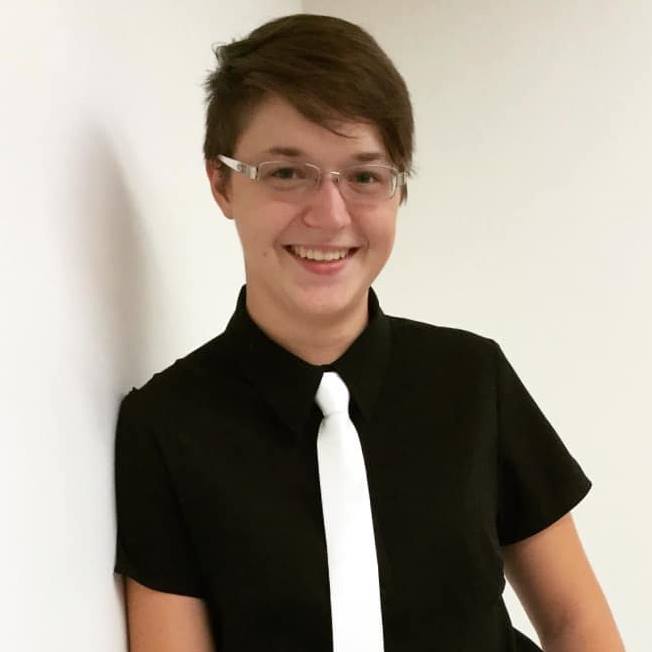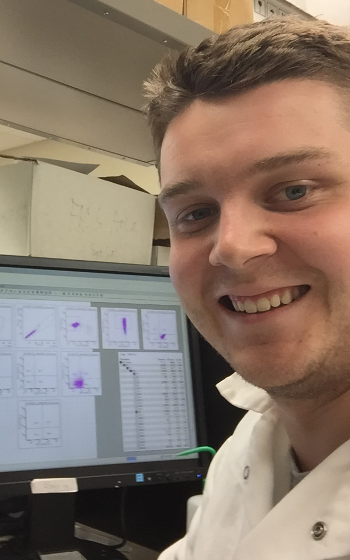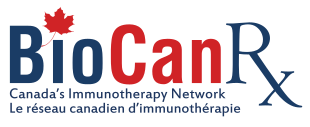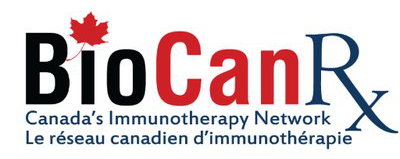Another summer has already come and gone, and that means that the 15 undergraduate students who embarked on a BioCanRx-funded research internship in cancer immunotherapeutics have also taken their leave. We are so proud of the way our summer students have learned and developed, and we want to extend our best wishes to them for the future!
Interested in learning more about the students’ various motivations and projects? You’re in luck: we asked two to expand on their summer internship experiences. Meet Emily Brown, who worked with Dr. John Bell at the Ottawa Hospital Research Institute, and Michael Hall, who worked with Megan Levings at the BC Children’s Hospital Research Institute.
1. Who are you? Where did you go to school? What’s your program? One fun fact about yourself!

Emily Brown

Michael Hall
2. Why did you want to do cancer research this summer?
Emily: My desire to do cancer research started because it’s something that has affected my family as well as so many other families. Contributing to the development of new and improved cancer therapies is extremely rewarding. After working one summer in Dr. John Bell’s lab and learning how through immunotherapies, it’s possible to use one’s own immune system to fight back against cancer – it lit a passion in me to learn more and be a part of the research involved in this form of cancer therapeutics.
Michael: When I first studied cancer, I could not stop thinking about it. Cancer arises from a mutation in our DNA that causes our cells to divide uncontrollably. One of the major issues with treating cancer is the fact that the cells look like our own cells. How do we target cancer cells and not our own? This challenge of how we can terminate our cancerous cells while keeping our healthy cells intact is what really fascinates me about cancer research. I wanted to do cancer research this summer because I wanted to learn more about cellular therapies and how we can optimize them to become very successful therapeutics.
3. What did you work on this summer? What did you discover?
Emily: My summer research project was to characterize the role of the SWI/SNF chromatin remodelling complex in oncolytic virotherapy. To do this, I conducted experiments which involved infecting cell lines with oncolytic viruses while knocking-down components of the SWI/SNF complex to see how it would alter cell sensitivity to virus. For pathway exploration, I turned to sequencing. I prepared and sent samples of cell lines with various knock-outs and OV-treatments for RNA-Sequencing with the aim that the differential expression of genes between various cancer and treatment conditions can provide insights as to which pathways are involved in mediating viral sensitivity in SWI/SNF deficient cell lines.
Michael: This summer, I worked in Megan Levings’ Lab at BC Children’s Hospital. The lab works with Regulatory T Cells (Tregs), a T cell subset that functions by suppressing immune responses and preventing autoimmunity. The lab is working to use Regulatory T Cell Therapy to prevent Graft vs Host Disease (GvHD) following hematopoietic stem cell transplantation; however, generating large numbers of Tregs for therapy has been challenging. Discarded pediatric thymuses are an ample source of high-quality Tregs. In preparation for future clinical trials testing thymic Treg cell therapy, I tested a few remaining parameters to finalize our Standard Operating Procedures (SOPs) for isolation and expansion of these cells that are compatible with Good Manufacturing Practice (GMP). Part of my work focused on testing incubation time and medium storage of thymic tissue prior to processing. I found that the viability of isolated Tregs decreased over time and that the type of medium used did not make a significant difference in viability, recovery, and purity of the isolated Tregs. In addition, I tested the effect of restimulation day and IL-2 and rapamycin supplementation levels on Treg quality. I did not observe any differences in expansion, viability, or FOXP3 expression between cells restimulated on days 9 – 14. I also did not observe any significant differences in expansion, viability, or FOXP3 expression with either 300IU/mL or 1000IU/mL IL-2; however FOXP3 expression was lower at day 7 when rapamycin was not added until day 2.
4. What was one memorable moment from this past summer during your studentship?
Emily: One memorable moment from this past summer during my studentship was being able to attend a bioinformatics workshop to begin learning how to analyze and understand bioinformatics data. Bioinformatic approaches can be very powerful research tools and it’s a completely different side of research than I’m used to. Getting a sampling of it was very exciting and made me want to delve into it more moving forward.
Michael: I enjoyed every moment in the Levings Lab. I made friends along the way and every lab member was very supportive. There are also no words to describe how great my supervisor was. I made mistakes in the lab but she was always supportive and patient which led me to keep improving day by day. I’m actually working in the lab for another 4 months because I had such a great experience!
5. How did this research experience impact your career development?
Emily: My time doing the BioCanRx student internship has reinforced that oncolytic virotherapy (viral cancer immunotherapeutics) is research area that I’m very interested in and would like to pursue further. Seeing all the hard work, dedication, and collaborative efforts put in to developing new and improved cancer immunotherapeutics this summer was both incredible and inspiring. The studentship has also provided me with valuable skillsets that will be very applicable and helpful to me during my Master’s degree and my future in research. I’m very thankful for being given this fantastic work and learning opportunity.
Michael: My goal is to go into medicine; but I have enjoyed my time at the lab so much that I’m definitely considering of doing graduate school to do more research. I am also seriously considering applying to the MD/PhD program so I can keep doing research and also go to medical school.
6. What is your hope for cancer treatment/care in the future?
Emily: I believe there is a lot of potential and promise in cancer immunotherapies. My hope for cancer treatment and care in the future is that as improved screening methods and therapies are developed and available through the hard work of many researchers – that one day cancer diagnoses will not be met with fear and hardship, but with safe and effective cures.
Michael: Since about 1 in 2 Canadians will be diagnosed with cancer in their lifetime, I hope we can find ground breaking ways to prevent one from getting cancer while also improving treatment outcomes in which every cancer patient has a very high chance of survival.

